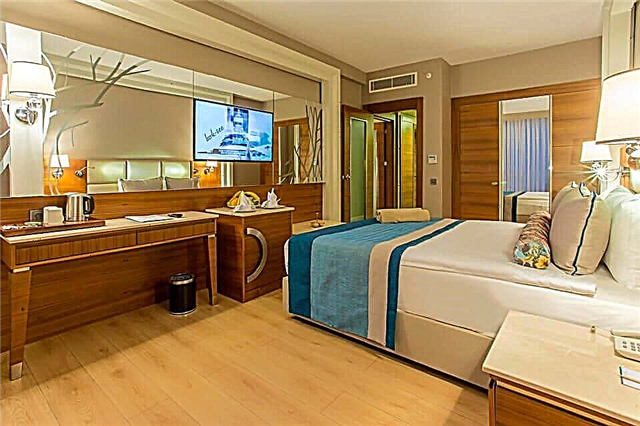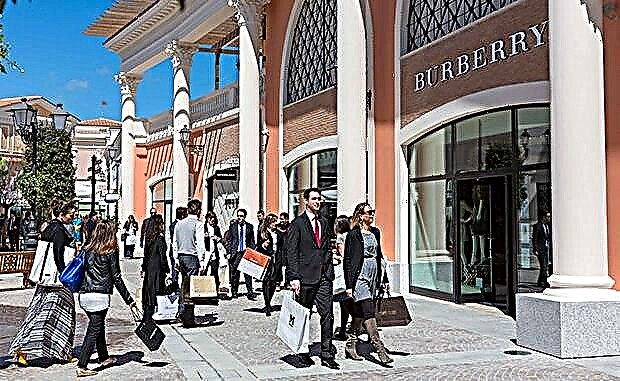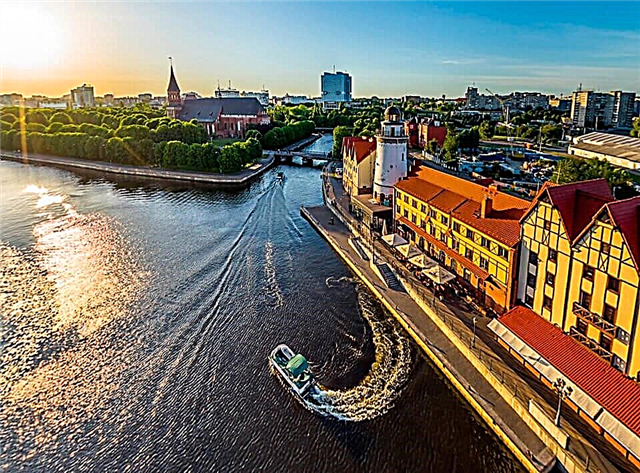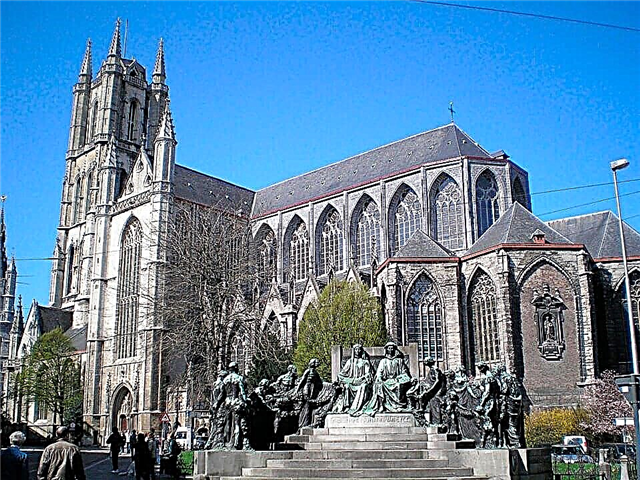Many tourists, going to Belgium, do not even suspect the existence of a small town, nestled at the intersection of the Leie (Lis) and Scheldt rivers. Yes, the sights of Ghent are not as popular as the famous Manneken Pis in Brussels or the canals of Bruges. But this compact city, in which past and present merge in complete harmony, has something to offer its guests. Try to devote at least one day to time travel - from the 21st century to the Middle Ages. Let's talk about 16 of the most interesting sights of Ghent.
Two reasons to visit Ghent
Even if you have been traveling in Europe for several days, and the cobbled streets, ancient architecture and dilapidated cathedrals no longer delight, the Belgian city, which has withstood the onslaught of wars and times, will surely conquer you. And there are reasons for that.
- Ghent is called the vegetarian capital of the world. There are dozens of restaurants offering a variety of vegan dishes to delight the most discerning palate. And even if giving up meat is not your life credo, taste one of the vegetable dishes - you may change your taste preferences. And for lovers of sweets, we recommend visiting the Temmerman's praline store.
- For nine years now, Ghent has held the title of the most creative city of music. This title was awarded to him by UNESCO. With the onset of dusk, countless hospitable bars open their doors, among which the main ones are the mecca for guitar lovers Kinky Star, the jazz Hot Club de Gand and the alternative Café Video for Alternative.
Friday Market Square (Vrijdagmarkt)

Once on the main square, surrounded by Gothic buildings, you understand why Europe is respectfully called an old woman. This popular place in the Middle Ages was the epicenter of city life. It witnessed many historical events: from coronations and festive parades to public executions, the last of which took place in 1822. In 1199, a market appeared here, which still exists today. Every Friday at 7:30 am, a bell ringing from the tower of the Toreke house, built in 1450, announces the beginning of brisk trade.
In the center of Vrijdagmarkt there is a monument dedicated to the leader of the uprising against the Flemish count - Jacob van Artevelde. It was he who became the leader of the guilds, whose support helped in 1340 to ascend to the throne of France to King Edward II of England. The pedestal of the monument is decorated with the coats of arms of the guilds and images of agreements, in the conclusion of which this wise politician participated. Because of the multitude of restaurants, residents call the historic square "open-air cafes". For beer lovers, we advise you to definitely look into the cult institution "Mad Greta" and empty a half-meter glass-flask of one of 250 types of beer.
Town Hall of Ghent
In 1482, the first stone of the structure was laid to become a meeting place for the authorities and guilds. However, the erected building seemed to the city council not large and luxurious enough, and it was decided to complete it. As a result, the Town Hall was transformed into a building with many faces: the Gothic façade contrasts sharply with the sumptuous lines of the Italian Renaissance.
Inside the Town Hall, you will also get in touch with a variety of styles: you will see the Arsenal Hall with wooden vaults rising upward, the Hall of Peace with a black and white tiled floor in the form of a labyrinth, symbolizing the search for happiness, the Wedding Chapel, decorated with stained glass, and the Throne Room, which retains the throne of Monarch Joseph II.
The Town Hall can be visited on weekdays from 8:00 to 17:00, closed on Sunday. Entrance - 5 euros, inspection as part of an excursion group - 8 euros.
Ghent post office building
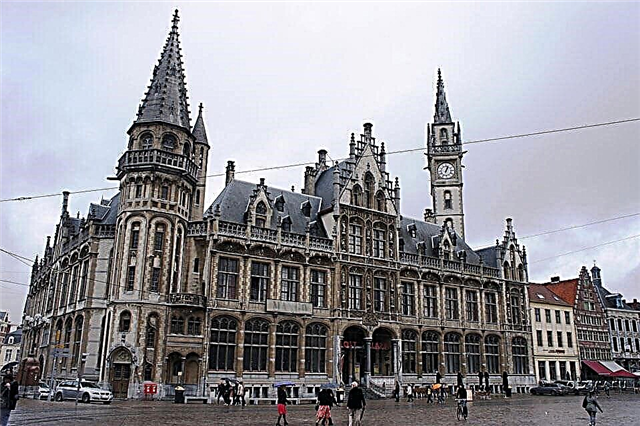
The former post office, erected in 1909, reveals Belgium to the guests of Ghent, engraved in stone. The neo-Gothic two-level façade with neo-Renaissance elements is decorated with three female figures symbolizing Belgium and its main provinces, Wallonia and Flanders. On the lower tier, there are ten smaller sculptures depicting the remaining regions of the country.
The architectural ensemble of the old post office is complemented by angular octagonal turrets and a square bell tower with a clock and an elegant spire. At the beginning of the 21st century, the richly decorated building was converted into the De Post shopping center.
Castle of the Counts of Flanders (Gravensten)

In the center of the city, surrounded by the waters of the Leie River and the Live Canal, the main attraction of Ghent is located - a powerful stone castle, erected between 1157 and 1191. by order of Count Philip of Alsace. It is said that Gravensten is the only structure in the country that fully illustrates the medieval way of life. Throughout its history, the castle performed not only a defensive function, but was also the residence of the Counts of Flanders, was used as a mint, a textile factory, a prison and a courtroom.
Today, a museum is open inside the stone building, in one of the rooms of which knightly armor and weapons are displayed. The impressionable natures should refuse to visit the second hall - the instruments of torture and corporal punishment represent the basis of the expositions. Better climb to the rooftop and take in the panoramic view of Ghent.
Tourists can visit Gravensten daily from April to October from 10:00 to 18:00 and from November to March from 9:00 to 17:00. The entrance ticket costs 10 euros.
Castle of Gerard the Devil

For lovers of mysticism and chilling stories, we recommend a walk to the castle of Gerard Vilian, the son of Count Zeger III of Ghent. This knight received the glory of Bluebeard, since, according to legend, he killed five of his wives, for which he was nicknamed the Devil.
Ancient legend and interesting architecture made Gerard's haven a popular tourist attraction. The 13th century building with a row of towers and pointed Gothic windows is the oldest stone building in the city. At different times, there were armories, a monastery, a dungeon and a shelter for the mad. Now the gates of the castle are closed to visitors.
Cathedral of Saint Bavo
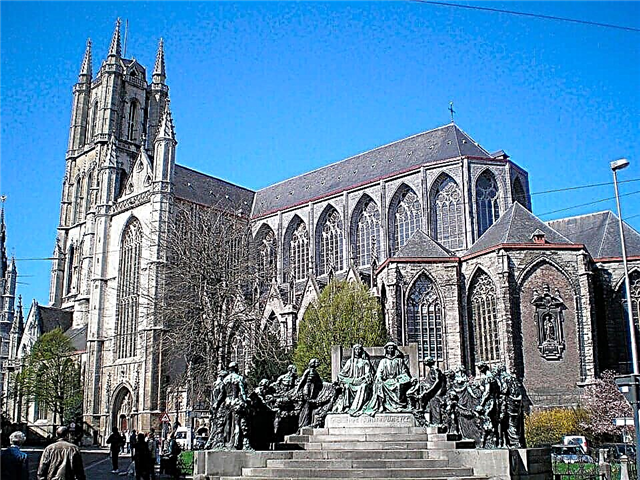
The famous temple, built in 1569, embodies the Gothic style in architecture and is an imposing structure of brick and granite. Its grandeur is complemented by a square tower with a spire, which lost its roof in 1602 as a result of a fire. Nine bishops of the city are buried in the crypt under the choir of the basilica.
The interiors of the cathedral are made in the Baroque style. Every detail here amazes with its monumentality and grandeur. The treasures of the temple are chapels with paintings by famous painters, stained glass windows and a carved pulpit made of oak and marble. A special place is occupied by the altar triptych by the Van Eyck brothers, created in the 15th century. The 24 panels depict scenes from the Bible: from the Flood to the coming of Jesus. The central part of the masterpiece is currently under restoration.
The doors of the cathedral are open daily: from April to October from 09:30 to 17:00 and from November to March from 10:30 to 16:00. Entrance - 4 euros.
Belfort Tower

The tower of the Cathedral of Saint Bavo is echoed by the 91-meter-high Belfort - a watch tower that notifies citizens of fires, floods and enemy attacks. The inhabitants of Ghent heard the first sound of the alarm bell, shaking the walls of houses with its ringing, in 1338, and after 332 years the bell tower was supplemented with a clock, which is today the oldest in Belgium.
Currently, in Belize, tourists can visit two museums: an archive of the city's secret documents and a collection of bells. There is a narrow staircase right at the doorstep, 400 steps of which lead to the observation deck.A prize awaits those who overcome them: a bird's-eye view of the city and a photograph against the background of a forged golden dragon-weather vane that previously adorned the cape of a Viking ship.
The bell tower is open daily from 10:00 to 18:00. Entrance - 8 euros.
Grass Street and Grain Street
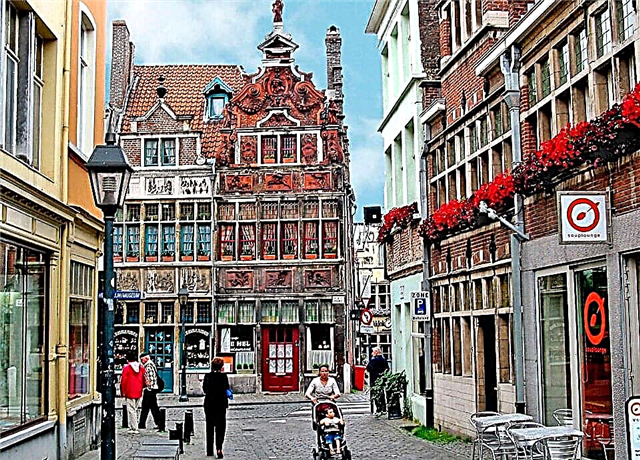
The medieval streets on either side of the Lis River were originally part of Toussaint-Bruggen, the city's bustling harbor. These embankments are home to architectural treasures - the most beautiful half-timbered houses in Belgium, built by wealthy merchants between the 13th and 17th centuries.
Several cafes are open here, inviting you to admire the boats sailing along the Lisu and taste traditional French fries or airy Belgian waffles. A pleasure boat departs from the pier, on which you can take a 40-minute excursion to the historic center and admire the silent witnesses of the Middle Ages: the Flanders facades, the Great Meat House and the mighty walls of the Castle of the Counts.
Church of St. Nicholas
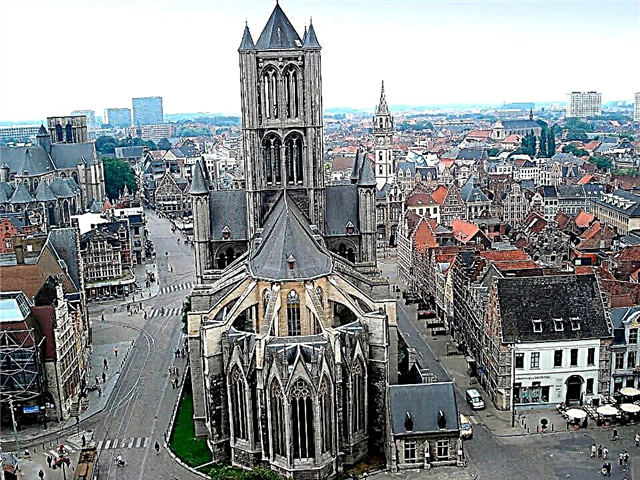
One of the oldest cathedrals in the city, named after St. Nicholas, rises on Zernovaya Street. Previously, there was a Romanesque chapel built in 1100 and destroyed by fire in 1176. The construction of a new temple in the Gothic style was carried out with funds collected from the sale of grain, and symbolized the wealth of the city. The material for the building was a gray-blue stone delivered by ships from the vicinity of Tournai.
The church was rebuilt many times, and in the 16th century it fell into disrepair and fell into decay. Restoration work started only at the beginning of the last century and is still ongoing. Today, the main nave is open to visitors, the restrained beauty of which is emphasized by a wooden pulpit, a gilded altar and an organ by Aristide Cavalier-Colle.
The temple can be visited from Tuesday to Sunday from 10:00 to 17:00 and on Monday from 14:00 to 17:00.
Bridge and Church of St. Michael
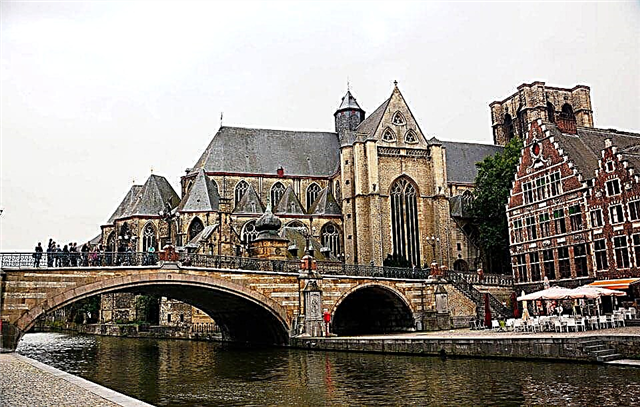
Grass Street and Zernovaya Street are linked by a cobbled bridge, which offers a fantastic view of the austere medieval stepped gables and cheerful baroque facades. A small bridge is framed by a massive railing; in the center there is a bronze statue of the Archangel Michael piercing a hydra with a spear.
Nearby is the Gothic Church of St. Michael, whose construction began in 1440. The timing was poorly chosen - wars, the Reformation and financial difficulties led to the fact that the temple was opened only 400 years later. A special feature of the church is the west tower. The architect planned to create a 134-meter structure, but his idea was not destined to come true - a brick structure with a flat roof rises into the sky only 23 meters.
The church is open daily from 14:00 to 17:00.
Museum of Fine Arts
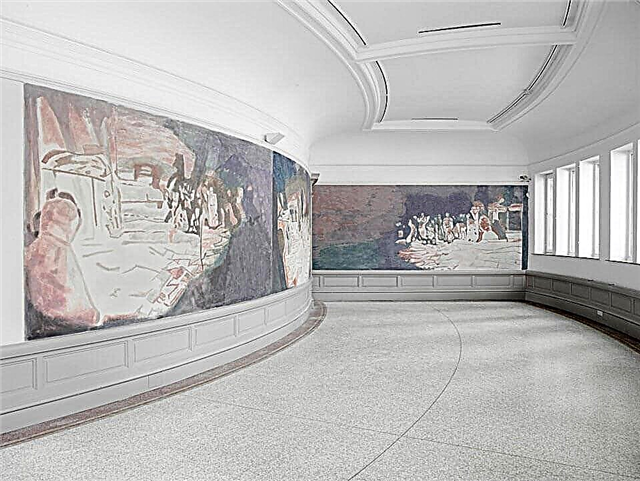
In the spacious halls of the museum, whose history began in 1802, works of European painting schools, painted from the 15th to the 20th centuries, are exhibited. In the presented collection, the largest share is occupied by paintings by Flemish artists. Lovers of beauty come here from all over the world to look at the immortal works of Bosch, Heckel, Pourbus, Rubens and Kirchner.
Now the gallery is under restoration of the painting "Adoration of the Mystical Lamb", created in the 15th century by the brothers Jan and Hubert van Eycko. Over its 600-year history, the painting has come a hard way: at different times it became a trophy of Napoleon and the Nazis, was repeatedly kidnapped and divided into parts, but in an incomprehensible way it always returned to the Cathedral of Saint Bavo, as it was the center of its altar. The legendary work is housed in a studio with glass walls, which makes it possible to observe the work of the restorers.
The expositions are open from Tuesday to Friday from 9:30 to 17:30, on Sunday from 10:00 to 18:00. Entrance - 8 euros, for persons under 18 years old - free.
City Museum of Contemporary Art (S.M.A.K.)
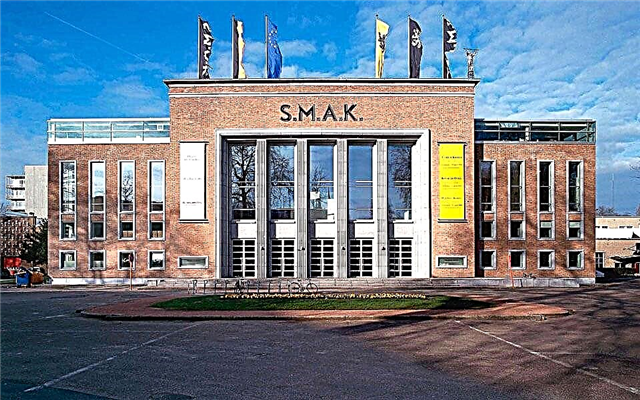
Opposite the art gallery in the former casino building, there is another haven for the muses of culture and painting, introducing visitors to modern trends: pop art, minimalism and cobra. This museum is often referred to as the "upstart in the art world" in tourist brochures. Probably, he received this dismissive comparison for provocative expositions-installations exposing the vices of modern society.
S.M.A.K., founded in 1999, features the best works of both international and Belgian artists, including Luc Tuymans, Joseph Beuys, David Hammons, Thomas Schütte, Ilya Kabakov and Marcel Brodhutters.
Opening hours: on weekdays (except Monday) from 9:30 to 17:30, on weekends from 10:00 to 18:00. Entrance - 12 euros.
Museum of Industry, Labor and Textile (MIAT)

MIAT is a relatively new museum, housed in the former Desmet-Guéquier cotton processing plant since 1990. The exhibits introduce the development of urban industry from 1750 to the present day. Among the objects of interest is the Mule Jenny spinning machine, which was smuggled out of England in 1800 and started the industrial revolution in Flanders.
The MIAT main building has five floors and houses a variety of collections. A special place is occupied by a video and photo exhibition dedicated to the difficult working conditions of workers, including minors. The museum has a café and a shop in a separate wing.
Opening hours: on weekdays from 9:00 to 17:00 and on weekends from 10:00 to 18:00.
Complex of protective structures Works
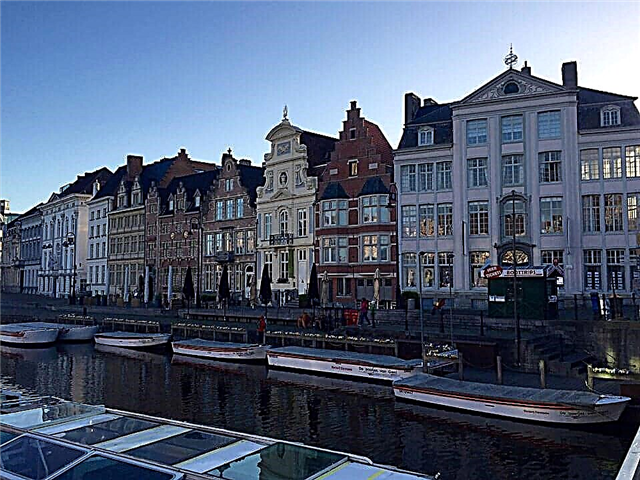
In 1488, Maximilian of Austria exploited the vulnerability of the defensive structure erected on the banks of the Live Canal and invaded Ghent. When, after a forty-day occupation, his army was forced to withdraw, the city authorities decided to strengthen the central building of the fortress wall with two towers. This is how the Works appeared, which gave the name to the whole district.
The stone complex, consisting of a central façade, two adjoining buildings with sharp-angled roofs and a bridge, has been used for centuries as an archive, a powder store and an inn. Now there is a room for seminars, conferences and receptions.
Gent-Sint-Peters station
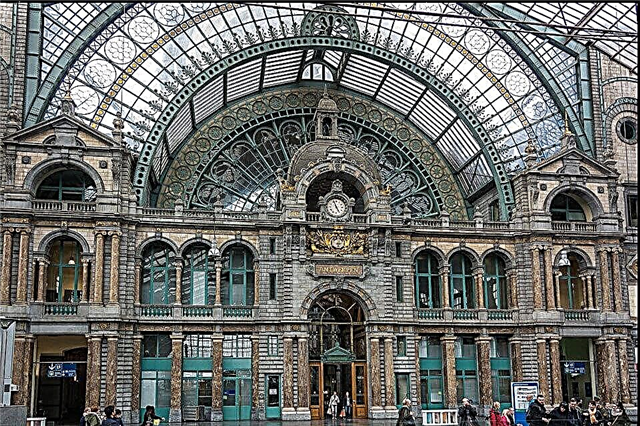
Tourists arriving in the pearl of Flanders by train are greeted by the main station - the railway station of St. Peter. The dry description given in the guidebooks is in no way true. The structure, reminiscent of a red brick Moorish palace, is huge. Inside there are waiting rooms, the main lobby and corridors that look like endless tunnels. As you view the frescoed and bas-relief walls and ceilings, be sure to catch your train from one of the 12 platforms.
A clock tower flaunts next to the station. She repeated the fate of the famous building in Pisa, Italy, and over time deviated from its axis. Due to the threat of collapse, the tower was completely dismantled and then rebuilt.
Ghent lies at the intersection of the main roads leading from Brussels and Bruges. It is very easy to get to the medieval pearl of Europe: trains from the main railway station of the Belgian capital leave every 15-25 minutes. Depending on the route, the trip lasts from 35 to 50 minutes. The ticket price is from 8 to 10 euros.
In Ghent, GuruTurizma recommends the following hotels:





